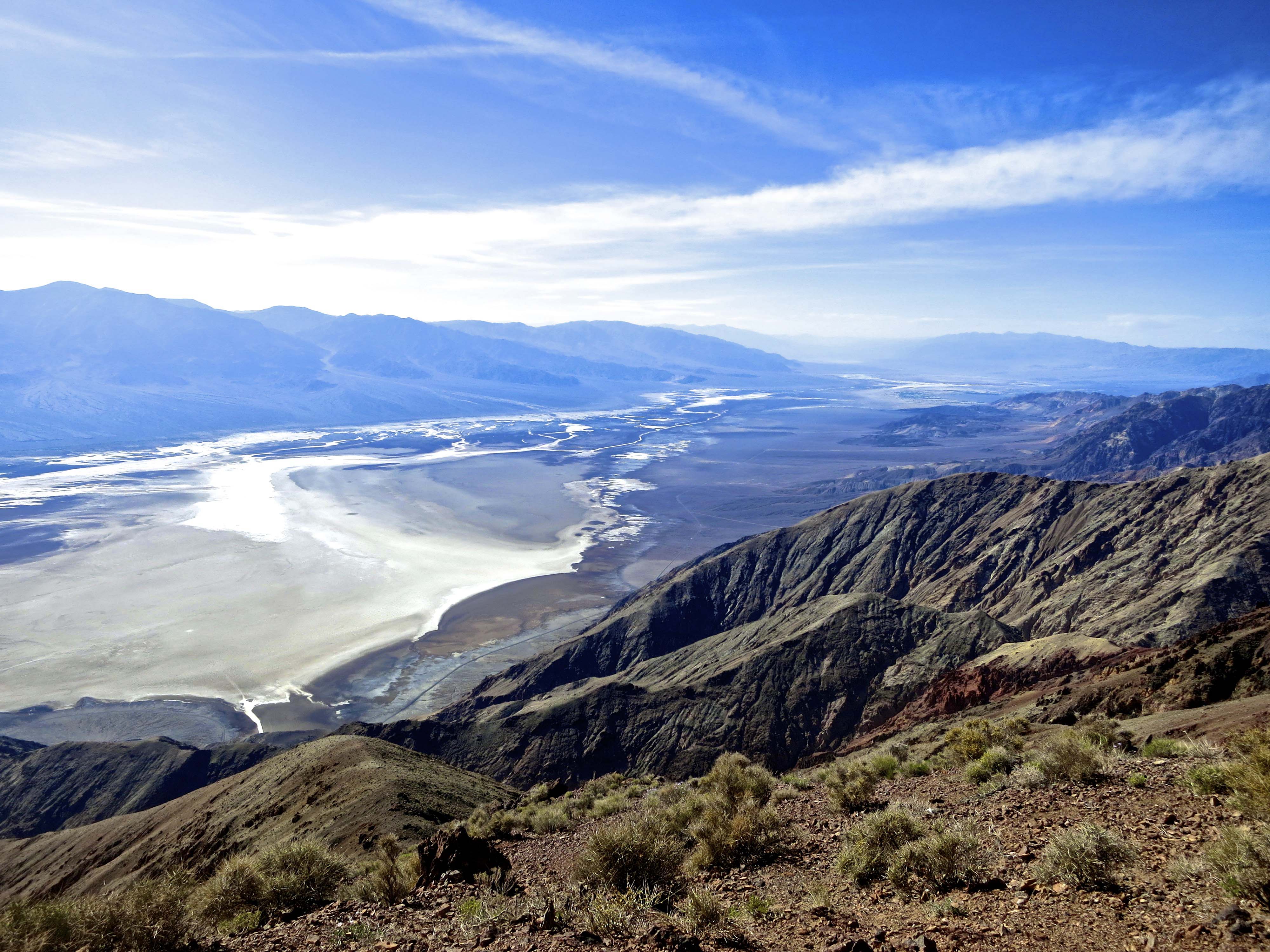Today’s post marks the beginning of Peggy’s and my journey around North America. We will be sharing our insights into what it’s like to live full time on the road plus our adventures along the way. A special focus of the blog will be visiting some of the most spectacular wildlands remaining on our continent. Death Valley is up first, starting with an overview and featuring Zabriskie Point.

Peggy and I were greeted with this sign when we stopped at Death Valley National Park Visitor at Furnace Creek on our recent visit. As noted, Death Valley is a land of superlatives. The word I use is extremes. I reserve superlatives for the scenery. It’s why we have returned to Death Valley over and over again.

I doubt that the Death Valley people included the price of gas as either an extreme or superlative, but we found it amusing. And we weren’t the only people taking photos of the sign. We made sure that we filled our tank in Bodie, a small Nevada town just outside of the park. Adding serious injury to insult, the price of a six pack of beer was $20 at the Furnace Creek store! Now that’s something worth whining about.
But let’s get back to the hottest, driest, and lowest. By hottest, they mean the hottest place on earth. It holds the world record at 134° F (57° C). Death Valley is not a place you want to visit in the summer if you can help it. Here’s the bad news. It’s getting hotter. We can thank global warming. The following chart sums it up.

The normal definition for a desert is a place that gets under ten inches of rain a year and has an evaporation rate that exceeds its rainfall. Death Valley averages under two inches and has an evaporation rate that is 75 times its rainfall. Sit in the shade doing nothing for a day and you can lose up to two gallons of water. The Valley holds the record for being the driest place in the United Sates. There is a reason why the Park Service always warns people to carry and drink lots of water when they are visiting.
And finally, the lowest. At its lowest point, Death Valley is 282 feet below sea level, which just happens to be the lowest spot in North America. On an earlier trip, Bone was proud to pose on the Bad Water Basin Sign announcing the low point.

I’m going to add another extreme. Wind. Death Valley doesn’t hold any records here as far as I know, but when I bicycled across the Valley on my 10,000 mile solo trip around North America, I remember being out of the saddle in low gear, and working my tail off— pedaling downhill. When I got back to camp, I discovered my tent had been blown a half mile away and was totally trashed. This time the wind was blowing so hard Peggy couldn’t get her door open on our truck! It took all my strength to force mine. Back at camp, I took a photo of “Cousin It.’

As I noted earlier, Peggy and I have returned to Death Valley many times, always in the fall, winter or spring. Each time we try to include something we haven’t done before. This time it was going in search of the rare and endangered, but not so elusive pup fish, and hiking up Mosaic Canyon. We also returned to some of our favorites: 20 Mule Canyon, Zabriskie Point, and the Artist’s Palette. Peggy and I were busy with our cameras the whole time. I’ll let our photos speak to the beauty of the park.
I’ll start with Zabriskie Point, a quick 15 minute drive away from Furnace Creek and the Park Visitor Center. Named after Christian Zabriskie, an early manager of the Pacific Coast Borax Company, it is probably the most photographed site in Death Valley. For good reason. It was once the site of an ancient lake where various sediments sank to the lake bed, giving the area its rich colors today. Early ancestors of both modern day horses and camels left their tracks along the shorelines. Tectonic plates moving beneath the valley lifted the mountains and dropped the valley, giving rise to the erosion which has done such an impressive job of carving out the ‘badlands’ shown in the photos below.








NEXT POST: We will visit Artist’s Palette at Death Valley and then go in search of the rare pup fish at Salt Creek.

















